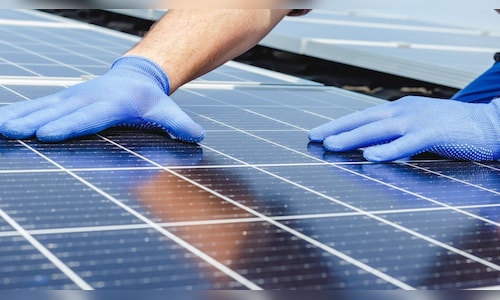This growth will be supported by government policy measures, particularly aimed at reducing imports of solar cells and modules, and encouraging backward integration by module manufacturers.
With an anticipated capital expenditure of ₹28,000-30,000 crore, the expansion is likely to be funded through a 70:30 debt-equity mix.
The focus on domestic production aligns with the Make in India initiative, driving further demand and sustainable growth within the solar sector.
Ankit Hakhu, Director at CRISIL Ratings, highlighted that nearly 19 GW of renewable capacity was implemented in FY24, with about 17 GW of that being solar. This 17 GW represents the overall demand for solar modules.
Previously, modules were predominantly sourced from China, with only a small portion manufactured domestically. However, domestic production has significantly increased, with research indicating that around 60-70% of module demand can now be met within India.
Read Here | Premier Energies bags contract worth ₹1,234 crore to supply solar modules
Similarly, the demand for solar cells aligns with that of modules, but current domestic cell production capacity remains low, leading to continued reliance on imports from China. The focus is now on ramping up domestic cell manufacturing, similar to the progress made in module production.
Additionally, Hakhu noted that assembling cells into modules yields a 5% lower margin compared to manufacturing cells from wafers and then converting them into modules, factoring in conversion costs.
Hakhu mentioned that several key players, including Waaree Energies, Premier Energies, and Adani Energy Solutions, have expressed interest in vertically integrating their operations as part of the production-linked incentive (PLI) scheme. This indicates a shift towards incorporating cell manufacturing within their business models.
Watch this video for more.
Also Read | Cummins India confident about domestic growth amid mixed export outlook, says MD
(Edited by : Unnikrishnan)


